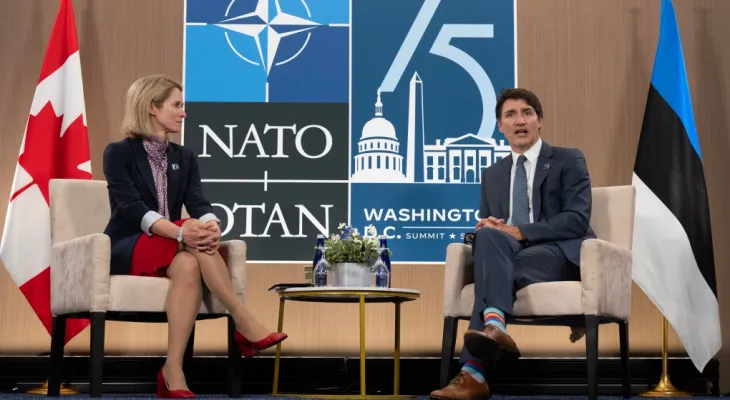Search here
Newspaper
Search here

Arab Canada News
News

Published: July 13, 2024
Economists said that Canada's promise this week to increase defense spending to 2 percent of GDP by 2032 was welcome news for the country's NATO allies, but fulfilling this commitment could push Canada into deeper deficits or impose massive spending cuts.
Prime Minister Justin Trudeau committed Canada to the timeline to achieve the 2% goal after facing increasing pressure from the United States and other NATO powers, including sharp criticism from some prominent U.S. lawmakers, to clarify its intentions.
However, economists say Canada will have to make some uncomfortable choices if it wants to keep its promise, even as the commitment enhances the country's standing among its allies at a time when the Russian invasion of Ukraine has put the alliance on high alert.
Canada currently spends about 1.4% of its GDP on defense.
During Trudeau's nine years as prime minister, total government spending has increased by 75 percent, with the additional funds primarily directed toward public health programs, social services, and government employee salaries.
The billion-dollar housing construction plan and the pharmacy care plan are expected to add pressure over the coming years.
This increase has inflated the country's deficit from CAD 550 million (USD 403.43 million) to nearly CAD 40 billion and inflated its debt to 42 percent of GDP last year from 31.5 percent in the 2014-2015 period.
The soaring debt could put Canada closer to breaching its recently adopted financial anchors designed to prevent further inflation of government debt.
David Perry, a defense expert and president and CEO of the Canadian Global Affairs Institute, said, "If you had to do it today, it would be extremely difficult in terms of how to actually manage government financing."
Achieving the 2% target by 2032 is certainly a far-off goal that does not allow for accurate predictions about the government's financial state, but from a 2024 perspective, there is no smooth path to follow.
Economists said that taking on more debt or mismanaging the deficit could harm Canada's excellent credit ratings.
They noted that increasing the defense spending goal to 2 percent by 2032 would require additional allocations between CAD 15 billion and CAD 20 billion over the next eight years, which cannot be achieved solely through tax increases.
Canada plans to boost its defense spending to 1.76 percent of GDP by 2030. Among the 32 NATO member countries, 23 countries are on track to meet or exceed the 2 percent target this year, according to the latest NATO estimates.
Pedro Antonis, chief economist at the Conference Board of Canada, an independent research organization, said, "Unless you do all of that in one year, you will have to gradually increase your spending."
He said the gradual approach means taking on more debt and higher interest payments every year, which could shock Canada regarding its financial barriers, adding that it could make the financial situation risky starting from the next budget.
Antonis stated that tax increases to raise revenue would not be well received by voters at a time when Trudeau's Liberal government is already showing weakness in public opinion polls.
Last year, Finance Minister Chrystia Freeland adopted new fiscal anchors, setting a cap on the fiscal deficit at CAD 40.1 billion, reducing debt as a ratio of GDP this year, and maintaining a lower ratio thereafter. The goal is to prevent the deficit from exceeding one percent of GDP in the 2026-2027 period.
Randall Bartlett, senior director of Canadian economics at the Desjardins Group, said, "The federal government risks violating at least one of its fiscal anchors by increasing defense spending to 2 percent of GDP by 2032."
To remain within fiscal anchors amid rising spending, Freeland earlier this year raised the taxable capital gains threshold for wealthy individuals and taxed all capital gains earned by corporations, which has been criticized by investors, economists, and business owners.
Craig Alexander, head of Alexander Economic Views, an independent economic research organization, said that Ottawa will need to cancel or cut spending on some programs, such as business subsidies or the size of the federal service if it wants to achieve the 2 percent target.
Support for businesses has increased by 140 percent during Trudeau's time in office compared to 17 percent in the previous nine years, said John Lester, an economist at the C.D. Howe Institute, wrote in April.
Similarly, the Canadian Public Service Commission in a report indicated that the size of the federal workforce, which consumes a large portion of government spending, has ballooned by 40 percent during the same period. Canada now employs more federal workers than ever before.
Comments